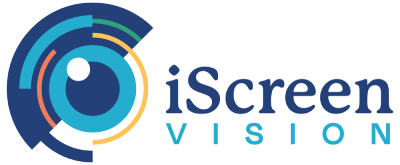These FAQs discuss various types of eye tests and eye charts including: children eye test, baby eye test, school eye test, sight test, preschool eye test, sight test chart, vision screening chart, and eye test chart.
Pediatric Eye Test FAQs
Eye Test
Many eye tests for children simply test visual acuity, which is a measure of how well a child sees (e.g., does the child have 20/20 vision?). The iScreen Vision Screener 3000 is a specialized pediatric ophthalmic camera, known as a photoscreener, which screens for eye abnormalities that are risk factors for amblyopia, also known as “lazy eye,” which is the leading cause of vision loss in children. These risk factors including refractive problems (such as hyperopia, myopia and astigmatism); strabismus (sometimes called being cross-eyed); and media opacities, such as cataracts, which can interfere with normal vision.
The iScreen Vision Screener 3000 captures digital images of the red reflex and corneal light reflex images from a child’s eyes. A “normal” red reflex means light passes through the eyes onto retina in a way that creates symmetrical images – oftentimes a reddish color – in both eyes. If the red reflex images are not symmetrical, display a white-colored crescent-shaped reflex, have dark spots or don’t create a red reflex at all, these abnormal red reflex images can all be indications of eye abnormalities which are risk factors for amblyopia.
Standard vision screening charts (sometimes commonly called eye test charts or sight test charts, or called by their medical name, Snellen charts) are used to test visual acuity, or how well a child sees. Eye charts which are used properly can detect reduced visual acuity (how well a child sees), which may be an indication of common refractive errors such as hyperopia, myopia or astigmatism. However, eye charts have limitations compared to other eye tests for children (which might also be called children eye test, school eye test, sight test, or preschool eye test), including testing with the iScreen Vision Screener 3000 photoscreener.Vision charts require a verbal response from a child, while iScreen Vision does not, meaning iScreen Vision can be used on children as young as 1 year old. In addition, while eye charts may be reliable in detecting whether a child is near-sighted, or has myopia, studies have demonstrated that they are unreliable in detecting if the child is far-sighted or has astigmatism. Moreover, visual acuity tests with an eye chart also don’t directly detect strabismus or media opacities such as cataracts.
iScreen Vision is recommended for children 1 year old and older. Babies’ eyes change rapidly, so by waiting until the child is at least 1, we believe the result is more likely to indicate whether any abnormal red reflex images truly indicate an eye abnormality or not. Pediatricians will normally test a baby’s eyes (also known as a baby eye test) right after the child is born, before he or she ever leaves the hospital, to check for any eye abnormalities or defect.
Eye Test FAQs
These FAQs discuss various types of eye tests and eye charts including: children eye test, baby eye test, school eye test, sight test, preschool eye test, sight test chart, vision screening chart, and eye test chart.
